I'm looking to blur a view's background but don't want to have to break out into UIKit to accomplish it (eg. a UIVisualEffectView) I'm digging through docs and got nowhere, seemingly there is no way to live-clip a background and apply effects to it. Am I wrong or looking into it the wrong way?
- 21,796
- 7
- 67
- 74
- 940
- 1
- 6
- 8
9 Answers
1. The Native SwiftUI way:
Just add .blur() modifier on anything you need to be blurry like:
Image("BG")
.blur(radius: 20)
 Note the top and bottom of the view
Note the top and bottom of the view
Note that you can Group multiple views and blur them together.
2. The Visual Effect View:
You can bring the prefect UIVisualEffectView from the UIKit:
VisualEffectView(effect: UIBlurEffect(style: .dark))
With this tiny struct:
struct VisualEffectView: UIViewRepresentable {
var effect: UIVisualEffect?
func makeUIView(context: UIViewRepresentableContext<Self>) -> UIVisualEffectView { UIVisualEffectView() }
func updateUIView(_ uiView: UIVisualEffectView, context: UIViewRepresentableContext<Self>) { uiView.effect = effect }
}
3. iOS 15: Materials
You can use iOS predefined materials with one line code:
.background(.ultraThinMaterial)
- 95,414
- 31
- 268
- 278
-
2This is the most succinct use of Representable that I have seen. Very helpful. – Andrew Duncan May 11 '21 at 00:51
-
there is no way to change the blur color of the `Material` background in SwiftUI - iOS 15 – JAHelia Apr 27 '22 at 14:19
I haven't found a way to achieve that in SwiftUI yet, but you can use UIKit stuff via UIViewRepresentable protocol.
struct BlurView: UIViewRepresentable {
let style: UIBlurEffect.Style
func makeUIView(context: UIViewRepresentableContext<BlurView>) -> UIView {
let view = UIView(frame: .zero)
view.backgroundColor = .clear
let blurEffect = UIBlurEffect(style: style)
let blurView = UIVisualEffectView(effect: blurEffect)
blurView.translatesAutoresizingMaskIntoConstraints = false
view.insertSubview(blurView, at: 0)
NSLayoutConstraint.activate([
blurView.heightAnchor.constraint(equalTo: view.heightAnchor),
blurView.widthAnchor.constraint(equalTo: view.widthAnchor),
])
return view
}
func updateUIView(_ uiView: UIView,
context: UIViewRepresentableContext<BlurView>) {
}
}
Demo:
struct ContentView: View {
var body: some View {
NavigationView {
ZStack {
List(1...100) { item in
Rectangle().foregroundColor(Color.pink)
}
.navigationBarTitle(Text("A List"))
ZStack {
BlurView(style: .light)
.frame(width: 300, height: 300)
Text("Hey there, I'm on top of the blur")
}
}
}
}
}
I used ZStack to put views on top of it.
ZStack {
// List
ZStack {
// Blurred View
// Text
}
}
And ends up looking like this:
- 21,796
- 7
- 67
- 74
-
6This blurs content in a view but I’m looking for for something that allows blurring of underlying content, much like how a UI VisualEffectView or navigationController works whereas you can have an item that blurs the content it overlays and only within the frame of the BlurringView rather than child content of a BlurringView. I suppose more like how BlendMode works. – Sonicjet Jun 16 '19 at 13:02
-
1
-
1
-
When I navigate the page second time the blur views do not appear. Is it because the updateUIView function is empty? – C.Aglar Oct 22 '20 at 18:00
-
This is genius! It works - and if you use style 'systemChromeMaterial', it mimics how the menu bars have blur / transparency. Nice job. – FontFamily Nov 20 '20 at 01:47
-
Is it possible to make the white lines underneath the blurred view more visible? – SmoothPoop69 Jan 12 '21 at 01:33
The simplest way is here by Richard Mullinix:
struct Blur: UIViewRepresentable {
var style: UIBlurEffect.Style = .systemMaterial
func makeUIView(context: Context) -> UIVisualEffectView {
return UIVisualEffectView(effect: UIBlurEffect(style: style))
}
func updateUIView(_ uiView: UIVisualEffectView, context: Context) {
uiView.effect = UIBlurEffect(style: style)
}
}
Then just use it somewhere in your code like background:
//...
MyView()
.background(Blur(style: .systemUltraThinMaterial))
New in iOS 15 , SwiftUI has a brilliantly simple equivalent to UIVisualEffectView, that combines ZStack, the background() modifier, and a range of built-in materials.
ZStack {
Image("niceLook")
Text("Click me")
.padding()
.background(.thinMaterial)
}
You can adjust the “thickness” of your material – how much of the background content shines through – by using one of several material types. From thinnest to thickest, they are:
.ultraThinMaterial
.thinMaterial
.regularMaterial
.thickMaterial
.ultraThickMaterial
- 98,760
- 8
- 65
- 87
As mentioned by @mojtaba, it's very peculiar to see white shade at top of image when you set resizable() along with blur().
As simple trick is to raise the Image padding to -ve.
var body: some View {
return
ZStack {
Image("background_2").resizable()
.edgesIgnoringSafeArea(.all)
.blur(radius: 5)
.scaledToFill()
.padding(-20) //Trick: To escape from white patch @top & @bottom
}
}
- 3,728
- 3
- 37
- 60
-
6You can add another parameter to the `.blur` modifier. If you use `.blur(radius: 5, opaque: true)` it should remove that white shade. – Gareth Lewis Apr 24 '21 at 18:11
-
Adding a black color that ignores safe area fixes the white halo effect. – S. Kaan Özkaya Jul 25 '22 at 14:01
I have found an interesting hack to solve this problem. We can use UIVisualEffectView to make a live "snapshot" of its background. But this "snapshot" will have an applied effect of UIVisualEffectView. We can avoid applying this effect using UIViewPropertyAnimator.
I didn't find any side effects of this hack. You can find my solution here: my GitHub Gist
Code
/// A View in which content reflects all behind it
struct BackdropView: UIViewRepresentable {
func makeUIView(context: Context) -> UIVisualEffectView {
let view = UIVisualEffectView()
let blur = UIBlurEffect()
let animator = UIViewPropertyAnimator()
animator.addAnimations { view.effect = blur }
animator.fractionComplete = 0
animator.stopAnimation(false)
animator.finishAnimation(at: .current)
return view
}
func updateUIView(_ uiView: UIVisualEffectView, context: Context) { }
}
/// A transparent View that blurs its background
struct BackdropBlurView: View {
let radius: CGFloat
@ViewBuilder
var body: some View {
BackdropView().blur(radius: radius)
}
}
Usage
ZStack(alignment: .leading) {
Image(systemName: "globe")
.resizable()
.frame(width: 200, height: 200)
.foregroundColor(.accentColor)
.padding()
BackdropBlurView(radius: 6)
.frame(width: 120)
}
- 71
- 1
- 4
-
This is nice because it uses the old `.blur(radius:)`, which gives more control over the amount of blurring than the new material styles. Even the `ultraThinMaterial` blurs quite a bit compared to, say, `.blur(radius:3)`. The normal use of `.blur` is to apply it to the view you want to blur, but the approach here gives you a view that you can insert in a ZStack and blur the contents _underneath_. The other approaches that do this use the new (heavily blurring) materials. – James Toomey Jan 23 '23 at 18:56
@State private var amount: CGFLOAT = 0.0
var body: some View {
VStack{
Image("Car").resizable().blur(radius: amount, opaque: true)
}
}
Using "Opaque: true" with blur function will eliminate white noise
- 152
- 1
- 10
There is a very useful but unfortunately private (thanks Apple) class CABackdropLayer
It draws a copy of the layers below, I found it useful when using blend mode or filters, It can also be used for blur effect
Code
open class UIBackdropView: UIView {
open override class var layerClass: AnyClass {
NSClassFromString("CABackdropLayer") ?? CALayer.self
}
}
public struct Backdrop: UIViewRepresentable {
public init() {}
public func makeUIView(context: Context) -> UIBackdropView {
UIBackdropView()
}
public func updateUIView(_ uiView: UIBackdropView, context: Context) {}
}
public struct Blur: View {
public var radius: CGFloat
public var opaque: Bool
public init(radius: CGFloat = 3.0, opaque: Bool = false) {
self.radius = radius
self.opaque = opaque
}
public var body: some View {
Backdrop()
.blur(radius: radius, opaque: opaque)
}
}
Usage
struct Example: View {
var body: some View {
ZStack {
YourBelowView()
YourTopView()
.background(Blur())
.background(Color.someColor.opacity(0.4))
}
}
}
Source
- 75
- 4
Sometimes we need a transparent blur effect. Here will be a solution.
struct TransparentBlurView: UIViewRepresentable {
typealias UIViewType = UIVisualEffectView
func makeUIView(context: Context) -> UIVisualEffectView {
let view = UIVisualEffectView(effect: UIBlurEffect(style: .systemUltraThinMaterialLight))
return view
}
func updateUIView(_ uiView: UIVisualEffectView, context: Context) {
DispatchQueue.main.async {
if let backdropLayer = uiView.layer.sublayers?.first {
backdropLayer.filters?.removeAll(where: { filter in
String(describing: filter) != "gaussianBlur"
})
}
}
}
}
- 5,204
- 3
- 39
- 45





